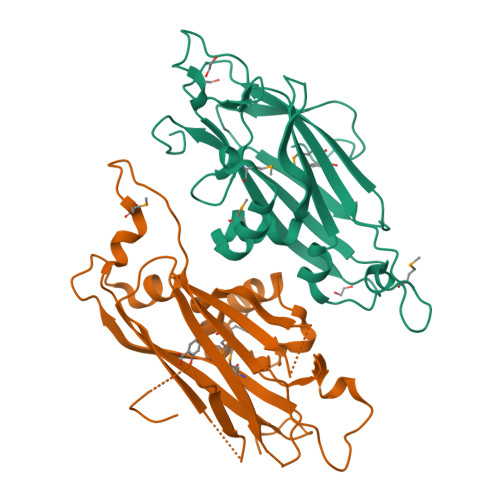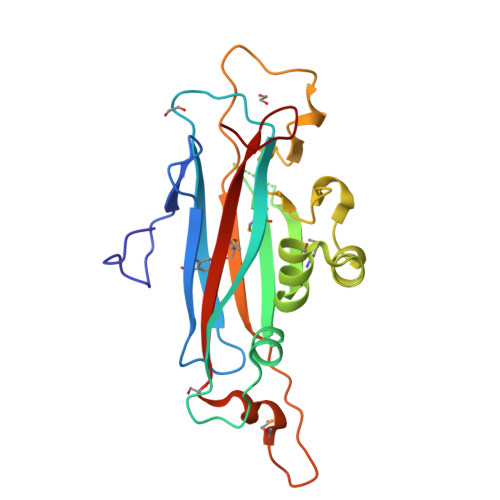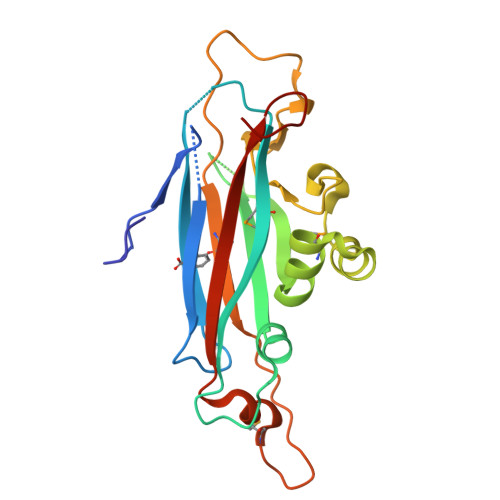Structural changes of TasA in biofilm formation ofBacillus subtilis.
Diehl, A., Roske, Y., Ball, L., Chowdhury, A., Hiller, M., Moliere, N., Kramer, R., Stoppler, D., Worth, C.L., Schlegel, B., Leidert, M., Cremer, N., Erdmann, N., Lopez, D., Stephanowitz, H., Krause, E., van Rossum, B.J., Schmieder, P., Heinemann, U., Turgay, K., Akbey, U., Oschkinat, H.(2018) Proc Natl Acad Sci U S A 115: 3237-3242
- PubMed: 29531041
- DOI: https://doi.org/10.1073/pnas.1718102115
- Primary Citation of Related Structures:
5OF1, 5OF2 - PubMed Abstract:
Microorganisms form surface-attached communities, termed biofilms, which can serve as protection against host immune reactions or antibiotics. Bacillus subtilis biofilms contain TasA as major proteinaceous component in addition to exopolysaccharides. In stark contrast to the initially unfolded biofilm proteins of other bacteria, TasA is a soluble, stably folded monomer, whose structure we have determined by X-ray crystallography. Subsequently, we characterized in vitro different oligomeric forms of TasA by NMR, EM, X-ray diffraction, and analytical ultracentrifugation (AUC) experiments. However, by magic-angle spinning (MAS) NMR on live biofilms, a swift structural change toward only one of these forms, consisting of homogeneous and protease-resistant, β-sheet-rich fibrils, was observed in vivo. Thereby, we characterize a structural change from a globular state to a fibrillar form in a functional prokaryotic system on the molecular level.
Organizational Affiliation:
Leibniz-Forschungsinstitut für Molekulare Pharmakologie, 13125 Berlin, Germany.






















